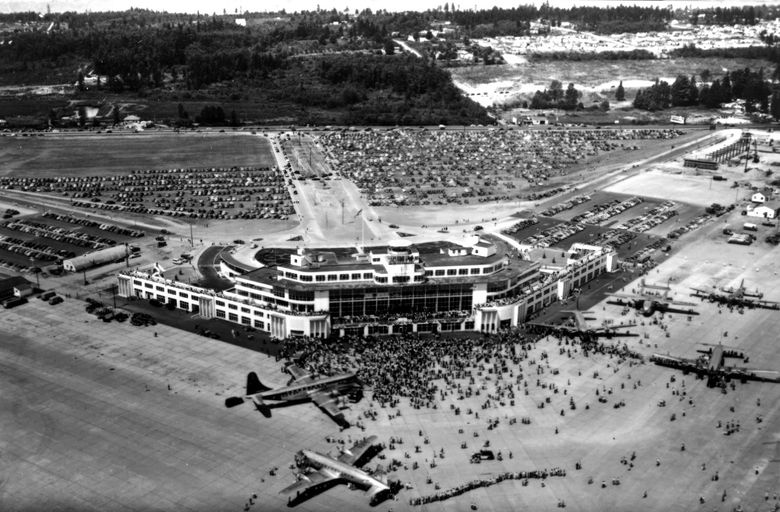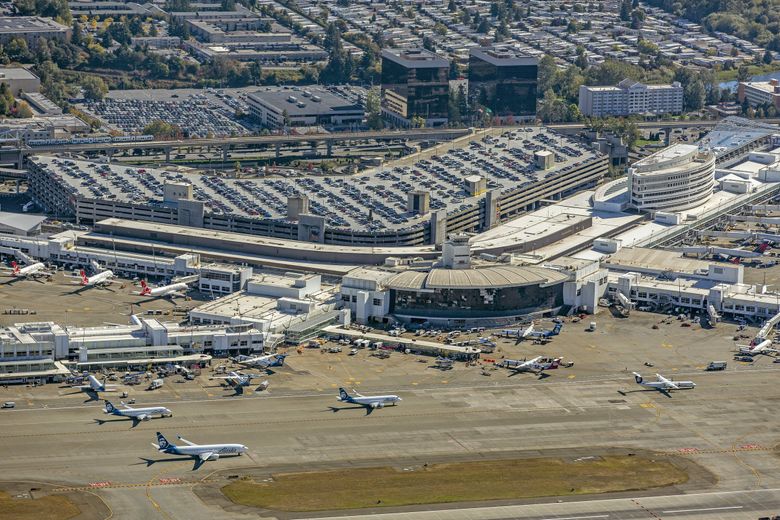IF THERE WERE birthday candles for our premier regional airport, winds of perpetual change would blow them out.
On July 9, 1949, 30,000 people gathered to dedicate the gleaming $3 million terminal and administration building of Seattle-Tacoma (long nicknamed Sea-Tac) International Airport. Its six stories and 243,000 square feet included eight loading gates and a state-of-the-art control tower. What’s more, its main 6,100-foot-long runway was expected to accommodate the then-burgeoning needs of aviation travel.
“Today we become a dynamic world center,” proclaimed Gov. Arthur Langlie, “and we are justly proud.”
Providing emphasis for the crowd, choreographed swooshes of jets, roaring bombers and lumbering troop carriers soared overhead.
That day, Northwest Airlines christened its first Boeing Stratocruiser, a long-range luxury airliner adapted from the C-97 military transport, using a Champagne bucket filled with “mingled waters from distant Pacific ports brought close by air.” Appropriately enough, the plane was named “Seattle Tacoma.”
Throughout the sweltering summer’s day, “Ice cream and soft-drink salesmen did a land-office business,” said The Seattle Times, while, “thousands … formed lines to inspect United Airlines, Western Airlines, Pan American World Airways and Northwest planes parked on the loading ramp.”
A supersize airport had been proposed more than a decade earlier, given the limits of then-crowded Boeing Field. County officials originally favored a location east of Lake Sammamish, but Pierce County and Tacoma officials lobbied hard for its eventual site, the Bow Lake plateau midway between Seattle and Tacoma.
“Interestingly, Sea-Tac gets the most fog of anywhere in the Northwest,” notes longtime aviation consultant Oris Dunham. Sea-Tac’s director of aviation until 1983, Dunham was on hand for its ambitious remodel throughout the 1970s. (In 1971, then in training, he was on duty when D.B. Cooper infamously hijacked and bailed out of a Sea-Tac-bound 727.)
During Dunham’s tenure, the terminal expanded, a parking garage materialized and runways doubled in length. “We hoped our refurbishment would last through 2030,” he says. “But we were a couple decades off. Now it’s like stuffing 50 pounds in a 5-pound bag.”
He points to planes’ increased passenger capacity and longer range as two culprits. A post-pandemic surge in travel has only added to the pressure. And it’s not just Sea-Tac. Airports across the country — and the world — continually strive to meet ever-increasing demand.
“Here’s my definition of an airport,” Dunham says with a wry twinkle: “a permanent construction site you happen to land airplanes at.”
On July 13, to celebrate Sea-Tac’s 75th anniversary, the Museum of Flight will set up a fusillade of figurative candles with a lively panel discussion — including Dunham!


